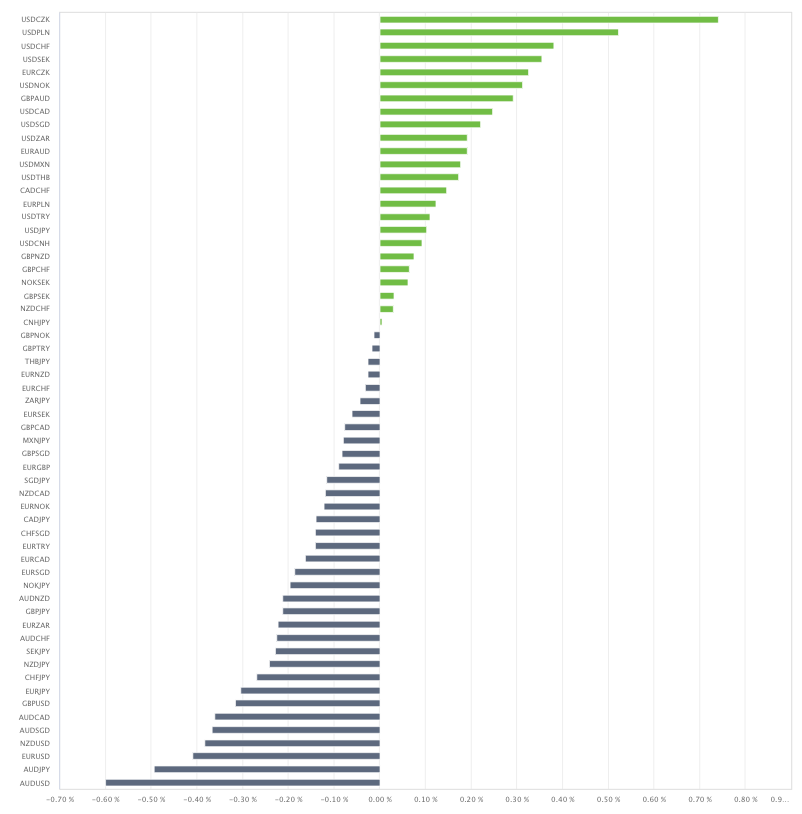Ichimoku Kinko Hyo (Titan_Ichimoku)

Indicator Overview
Correcting Errors in the Default MT4 and MT5 Ichimoku Indicator
This indicator displays the Ichimoku Kinko Hyo, commonly known as the Ichimoku Cloud. While MT4 and MT5 come equipped with an Ichimoku Cloud indicator by default, there is a known issue where the leading lines and spans are counted from the next candlestick rather than from the current one, resulting in a one-bar displacement. This modified indicator corrects that displacement.
Although the displacement is only one bar and might not seem significant, if you want to analyze using an Ichimoku Kinko Hyo that matches the original specifications, we recommend using this version.
【Comparison image of the default Ichimoku Cloud (pink) overlaid with the corrected version】

What is the Ichimoku Kinko Hyo?
The Ichimoku Kinko Hyo is an indicator that displays five different lines on the chart: the conversion line (Tenkan-sen), base line (Kijun-sen), lagging span (Chikou Span), leading span A (Senkou Span A), and leading span B (Senkou Span B). The area between the leading spans is referred to as "the cloud."
【Lines of the Ichimoku Kinko Hyo】

Analyzing Trends with the Three Roles
The basic analysis method of the Ichimoku Kinko Hyo involves what is called the "Three Roles." When all three roles indicate an uptrend, it is referred to as a "bullish three-line agreement" (sanyaku kouten), and when all indicate a downtrend, it is known as a "bearish three-line agreement" (sanyakugyakuten).
【Example of a sanyakugyakuten】

Three Roles #1: Relationship between the Conversion Line and Base Line
When the short-term trend indicator, the conversion line, crosses above the medium-long term trend indicator, the base line, it suggests strengthening bullish momentum. Conversely, a cross below indicates strengthening bearish momentum.
【Relationship between the Conversion Line and Base Line】

Three Roles #2: Relationship between the Cloud and Price
The cloud is formed between leading span A and leading span B. When the price moves above the cloud, it suggests a strengthening uptrend. Conversely, a move below the cloud suggests a downtrend. If the price moves within the cloud, it is considered trendless.
【Relationship between the Cloud and Price】

Three Roles #3: Relationship between the Lagging Span and Price
The lagging span is the current price projected backwards. When the lagging span moves above past prices, it suggests bullish momentum; a move below suggests bearish momentum.
【Relationship between the Lagging Span and Price】

※ This indicator is only compatible with the Windows versions of MT5 and MT4 from TitanFX.
Indicator Terms of Use
Only those who agree to all the following items may use the indicators distributed on this website (https://research.titanfx.com):
1.The indicators and related descriptions are based on various data believed to be reliable, but their accuracy and completeness are not guaranteed.
2.The data displayed by the indicators do not guarantee your investment results. Also, the displayed content may vary due to market conditions and communication environments.
3.Please make investment decisions using indicators at your own risk. We are not responsible for any disadvantages or damages arising from the use of indicators.
4.Specifications of the indicators are subject to change without notice. Changes will be announced on the indicator description pages, etc.
5.Indicators should only be used by customers who have downloaded them. Transferring or selling the indicators to third parties is prohibited.
Indicator Settings
Input (for MT5), Parameter Input (for MT4) Tab Settings
| Variable Name | Description | Default |
|---|---|---|
| Tenkan-sen | Specify the period for calculating the conversion line. | 9 |
| Kijun-sen | Specify the period for calculating the base line and lagging span, among others. | 26 |
| Senkou SpanB | Specify the period for calculating leading span B. | 52 |
Color (for MT5), Color Settings (for MT4) Tab Settings
| MT5 | MT4 | Description |
|---|---|---|
| Tenkan-sen | 0 | Color, thickness, and type of Tenkan-sen line |
| Kijun-sen | 1 | Color, thickness, and type of Kijun-sen line |
| Senkou Span A; Senkou Span B(left) | 2 | Color, thickness, and type of the Senkou Span line |
| Senkou Span A; Senkou Span B(Right) | 3 | Color, thickness, and type of the Senkou Span line |
| Chikou Span | 4 | Color, thickness, and type of the Chikou line |
| Senkou Span A; Senkou Span B(left) | 5 | Color of the cloud when leading span A is above |
| Senkou Span A; Senkou Span B(Right) | 6 | Color of the cloud when leading span A is above |
